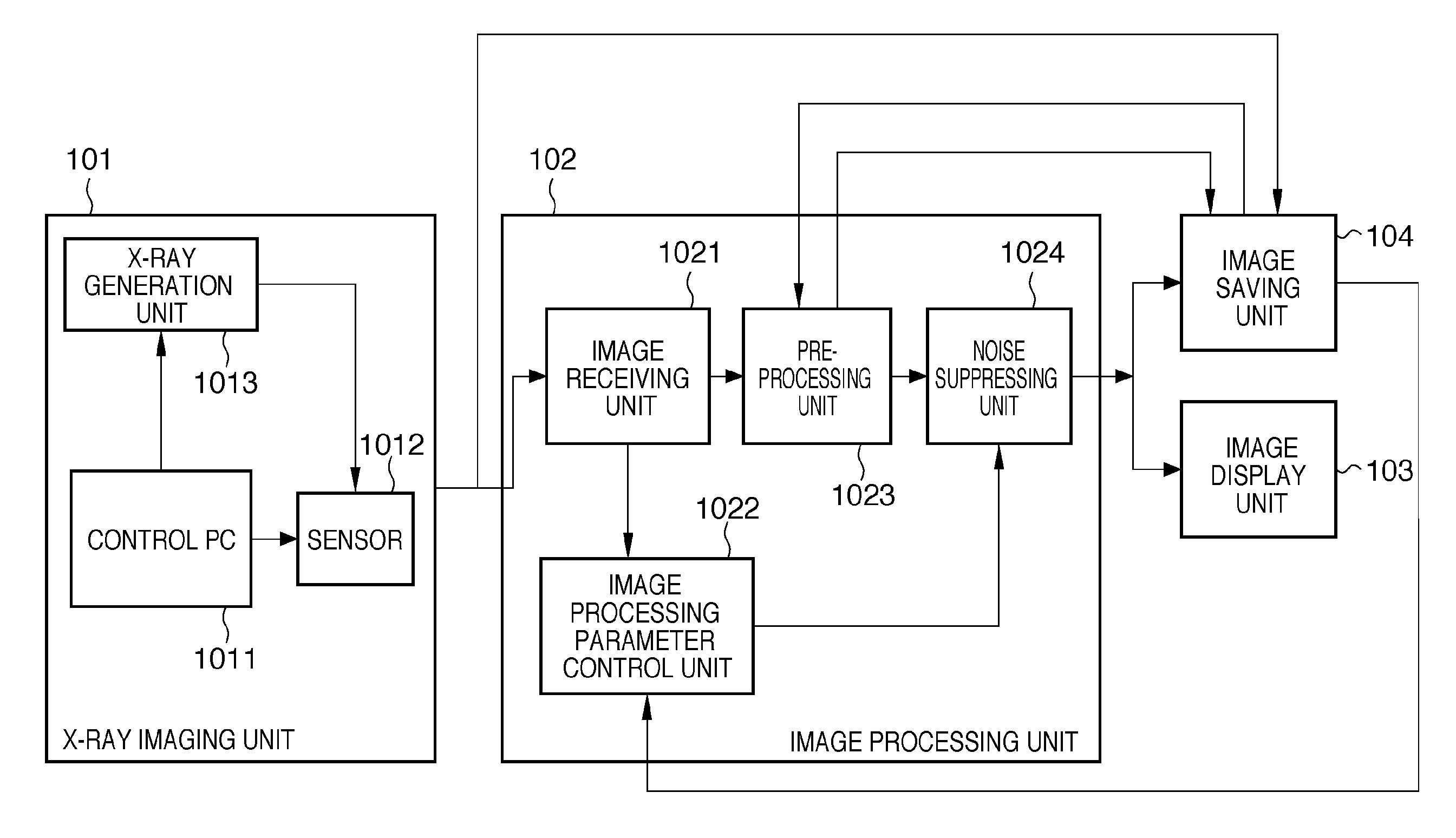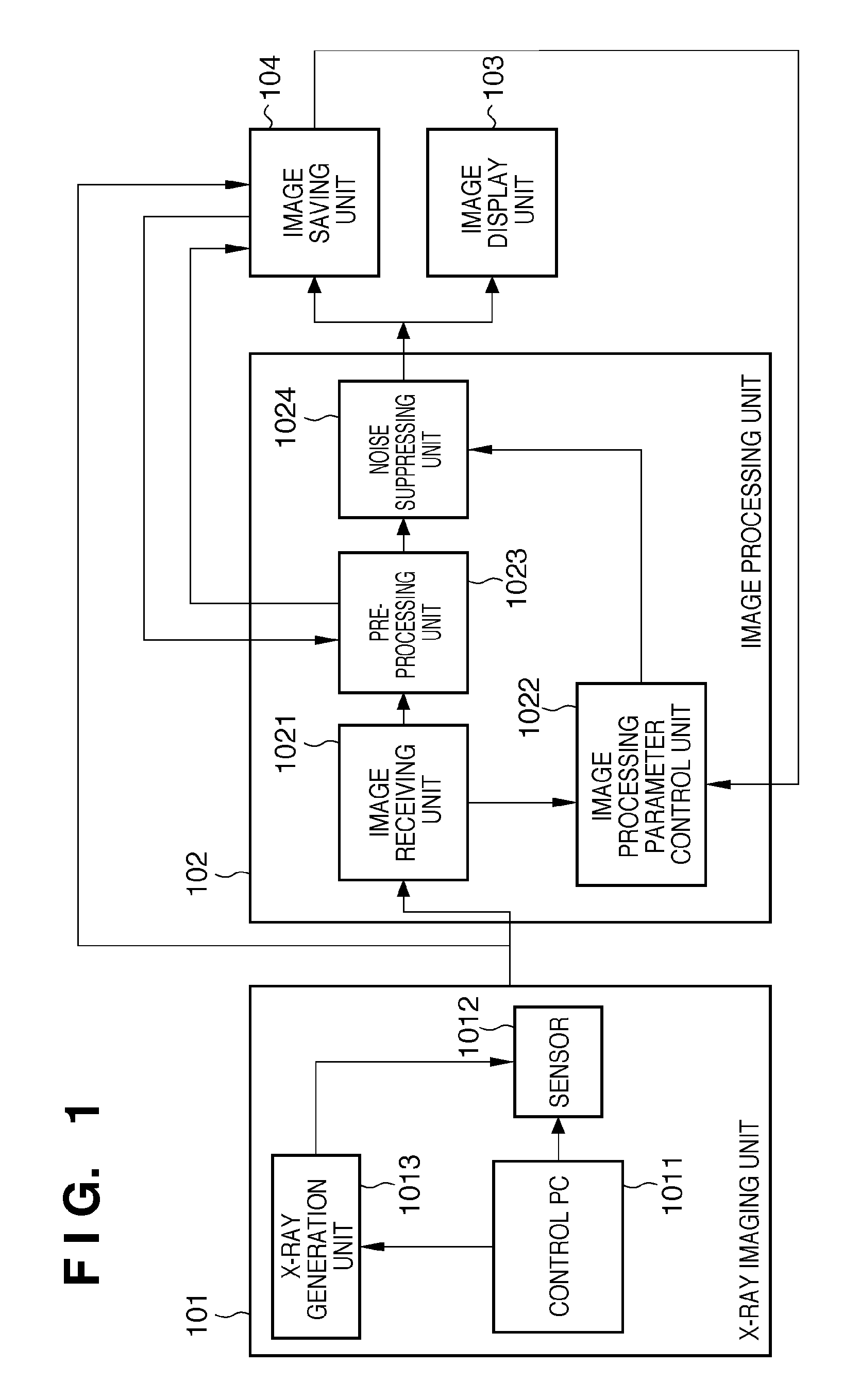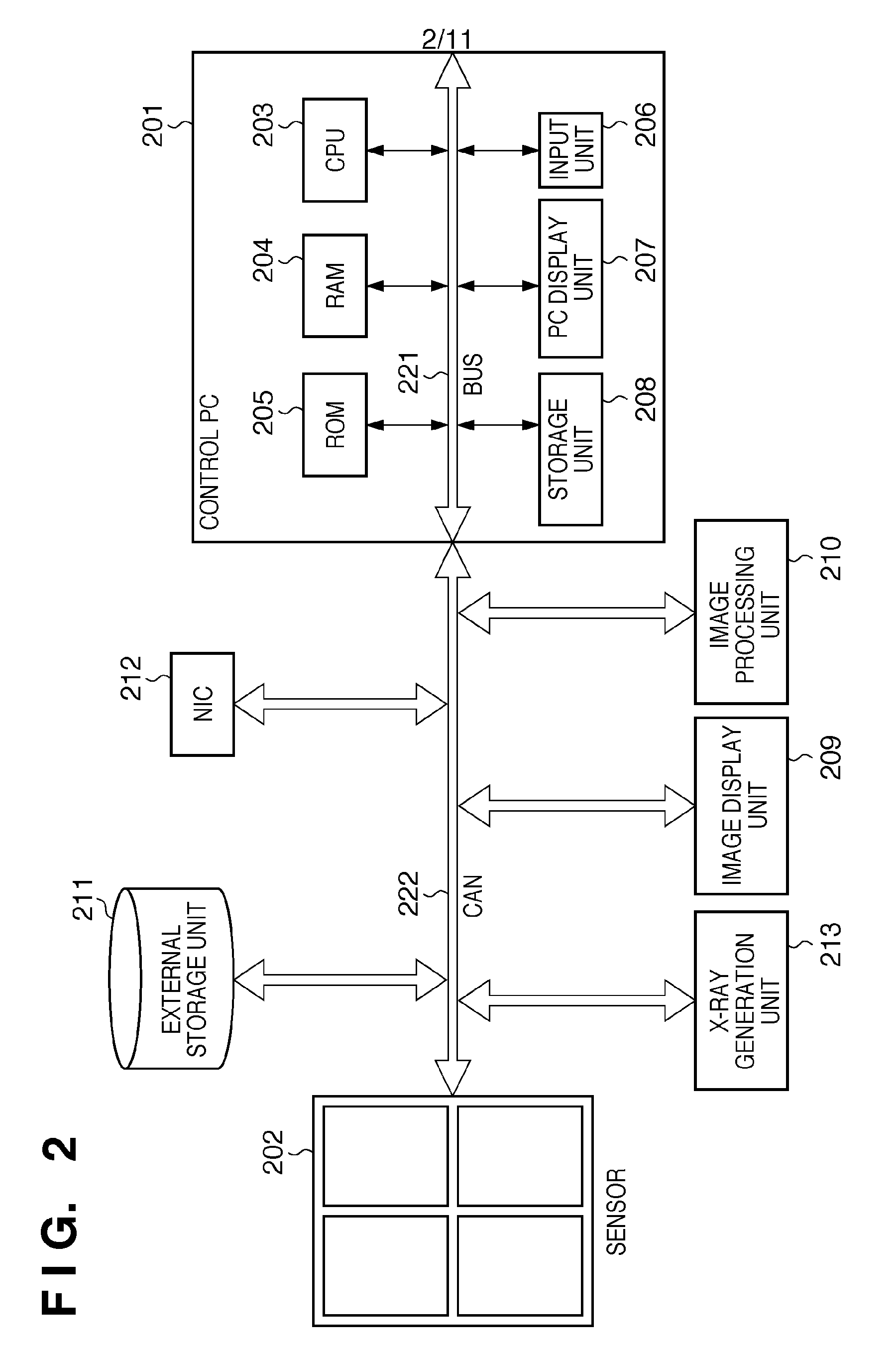X-ray image processing apparatus, x-ray image processing method, program, and storage medium
a technology x-ray image processing, applied in the field of x-ray image processing technique, can solve the problems of large random noise inability to suppress noise at all, blurred edges of x-ray fluoroscopic image, etc., to achieve high-quality x-ray image processing, prevent noise amount, and prevent noise amount
- Summary
- Abstract
- Description
- Claims
- Application Information
AI Technical Summary
Benefits of technology
Problems solved by technology
Method used
Image
Examples
first embodiment
[0026]In this embodiment, an arrangement in which the random system noise is detected by calculating it by using two dark images for each radiographed image will be described.
[0027]The dark image is an image acquired by an X-ray receiving sensor functioning as an X-ray receiving unit when no X-rays are irradiated. The dark image is also called a dark current image, FPN (Fixed Pattern Noise) image, or offset image. On the other hand, an X-ray image is an image acquired by the sensor when X-rays are irradiated.
[0028]FIG. 4 is a timing chart showing the timings of X-ray irradiation, acquisition of an X-ray image by an X-ray receiving sensor (to be also simply referred to as a “sensor” hereinafter), analysis of noise contained in the X-ray image, and image processing parameter setting.
[0029]As shown in FIG. 4, the X-ray receiving sensor acquires image data in the order of the first dark image obtained before the start of X-ray irradiation, the first X-ray image obtained when X-rays are ...
second embodiment
[0062]The second embodiment is almost the same as the first embodiment in arrangements and procedures of an X-ray imaging unit 101, image processing unit 102, image display unit 103, and image saving unit 104. The difference from the first embodiment is the method of detecting the random system noise performed in an image processing parameter control unit 1022 of the image processing unit 102.
[0063]In step S708 of this embodiment, the image processing parameter control unit 1022 calculates the difference between the first and second dark images. The afterimage of an X-ray image may remain in the second dark image acquired immediately after the X-ray image. Accordingly, the afterimage may remain in this difference image in addition to the random system noise. If the afterimage component remains, an error occurs in the calculation result of the standard deviation, and no accurate random system noise is obtained.
[0064]As processing corresponding to step S709, therefore, the image proce...
third embodiment
[0066]The third embodiment is almost the same as the first embodiment in arrangements and procedures of an X-ray imaging unit 101, image processing unit 102, image display unit 103, and image saving unit 104. The difference from the first embodiment is the method of detecting the random system noise, which is performed in an image processing parameter control unit 1022 of the image processing unit 102.
[0067]In step S708 of this embodiment, the image processing parameter control unit 1022 calculates the difference between the first and second dark images.
[0068]Then, in step S709, the image processing parameter control unit 1022 segments the difference image into a plurality of blocks, and calculates the average luminance value of each block. Since the random system noise distributes with an average value of 0, the standard deviation of a block whose average value is closest to 0 is calculated and used as the random system noise of the whole image. The difference image may be segmente...
PUM
 Login to View More
Login to View More Abstract
Description
Claims
Application Information
 Login to View More
Login to View More - R&D
- Intellectual Property
- Life Sciences
- Materials
- Tech Scout
- Unparalleled Data Quality
- Higher Quality Content
- 60% Fewer Hallucinations
Browse by: Latest US Patents, China's latest patents, Technical Efficacy Thesaurus, Application Domain, Technology Topic, Popular Technical Reports.
© 2025 PatSnap. All rights reserved.Legal|Privacy policy|Modern Slavery Act Transparency Statement|Sitemap|About US| Contact US: help@patsnap.com



